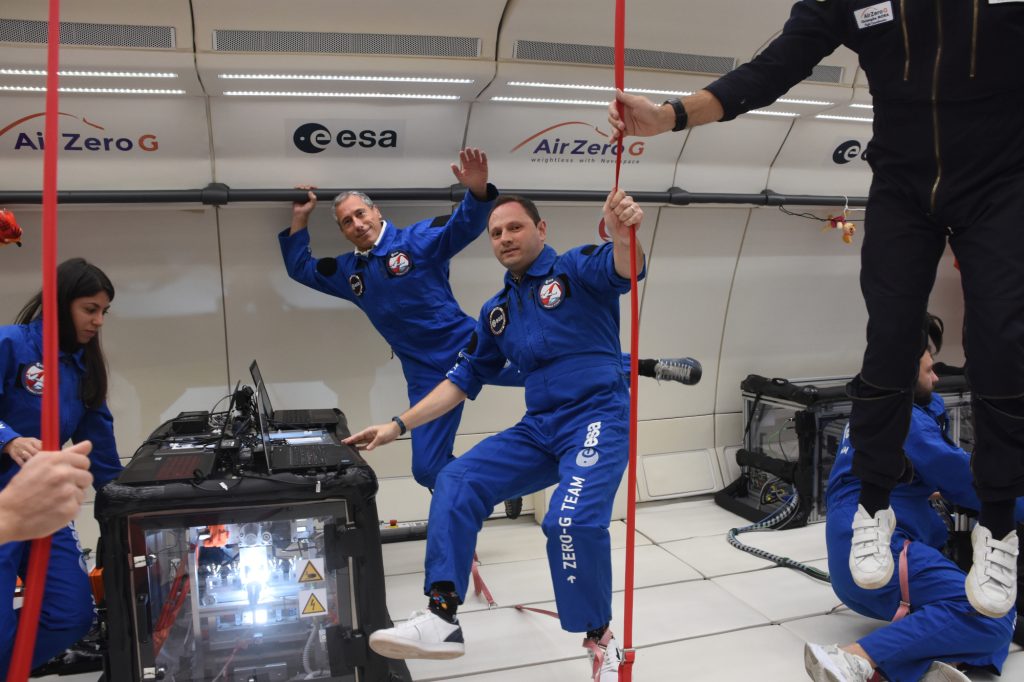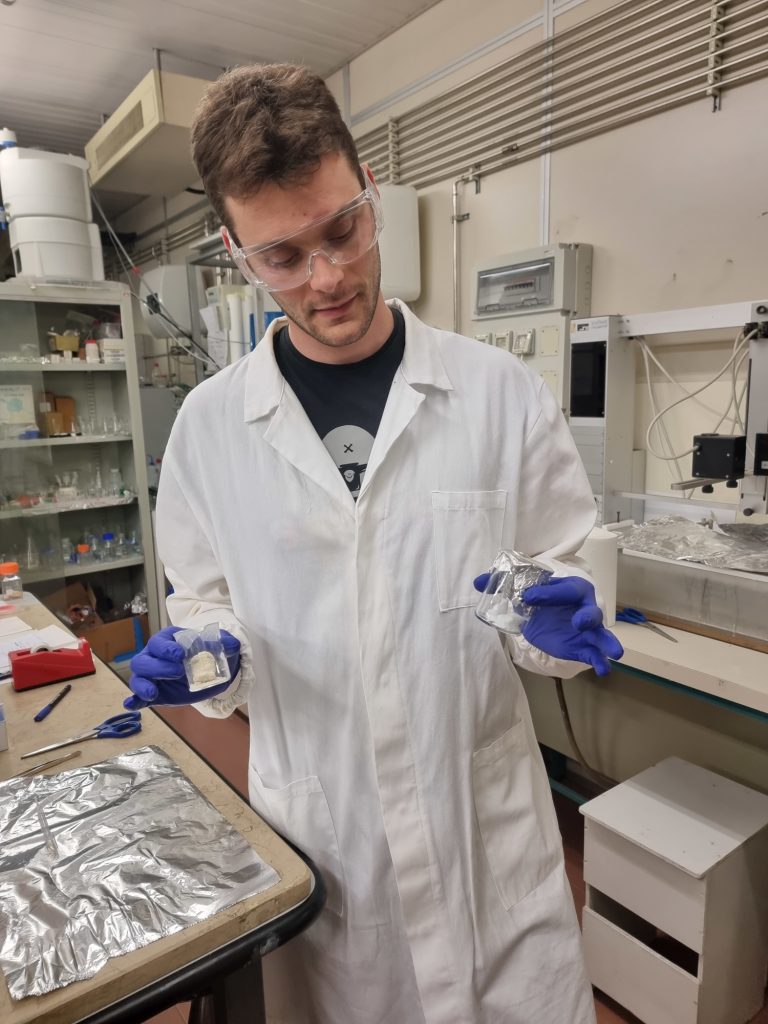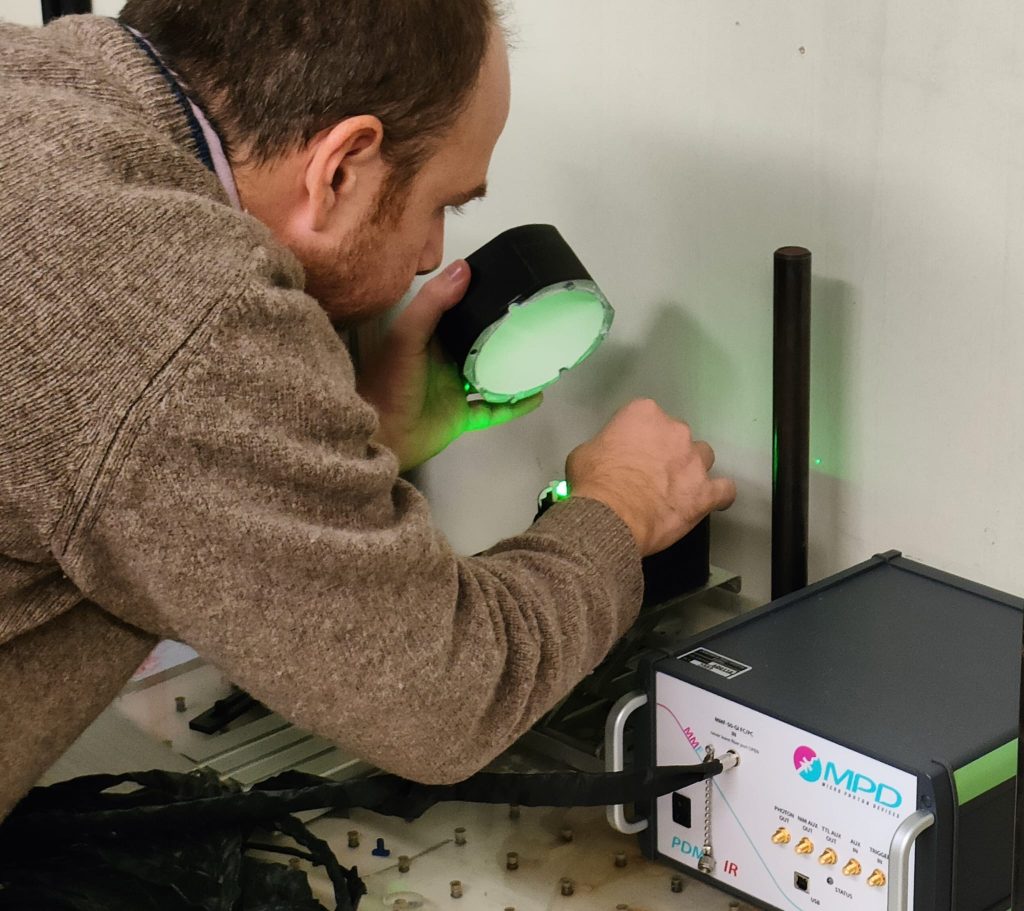Properties of foams, emulsions and single molecule layers also exploiting in-orbit experiments

Many complex fluids (mayonnaise, yoghurt, foams, paints, creams, pastes, etc.) are made up of multi-phase systems, characterized by a very high ratio between the interface area and the volume. Their stability is determined by processes such as aggregation and coalescence of individual bubbles or drops. We study structure and dynamics in foams and emulsions by employing a series of techniques: correlation spectroscopies (dynamic light scattering DLS and Diffusing Wave Spectroscopy DWS) on foams and emulsions;
Fluorescence microscopes, ellipsometry and microscopy at Brewster’s angle on single layers molecular. Interpretation of the data is also based on numerical simulations such as Optical Monte-Carlo techniques. This research, motivated also by the obvious application interests e.g. in the field of food science, it is part of a large project in collaboration with the ICMATE-CNR institute of Genoa, the Virginia Commonwealth University (USA), the Aristotle University of Thessaloniki (GR) and other research centres, funded by the European Space Agency. To understand these processes by cancelling out the effects of gravity by investigating foams and emulsions in micro-gravity, To this aim we performed experiments, and more are planned by the Soft Matter Dynamics facility hosted on the Columbus Laboratory of the International Space Station . In the meantime, we also participate in experimental campaigns exploiting parabolic flights which offer repeated and short periods of weightless conditions
For info: luigi.cristofolini@unipr.it
Solid foams formed by photocatalytic nanoparticles as filters of water and air

Photocatalytic oxidation (PCO) could provide energy-efficient purification of water and air. Its efficacy is constrained mainly by limited photocatalytic activity and active surface. To address both, solid foams with hierarchic porous structures spanning multiple length-scales, stabilized by photocatalytic Zn-doped titania nanoparticles (NP) are synthesized and tested. We routinely characterize these by SEM, EDS, DLS, XRD, Raman and UV-Vis spectroscopies. Solid foams are then formed and stabilized by NP complexes with cationic surfactants. The foam morphology is characterized and photocatalytic activity needs to be tested. This work aims at paving the way for the development of efficient systems for air and water purification in demanding technological sectors, such as aerospace.
For info: luigi.cristofolini@unipr.it davide.orsi@unipr.it
Nanostructures for targeted therapy

A major limit of current therapies is the lack of a precise localization. Drugs circulate in the whole body, interacting also with healthy tissues, where they could cause collateral effects. This is true for cancer therapy, where radiotherapy and chemotherapic drugs. Nanostructures have been proposed as a solution to this problem; they can be developed to target the ill tissue or tumoral mass, providing a localized therapy which could also provide an answer to the problem of drug resistance.
In this project, we focus on nanostructures activated by external stimuli: x-ray irradiation, magnetic fields, light. When irradiated the nanostructure are able to either
- locally generate chemical species toxic for the cancerous cell (Self Lighted Photodynamic Therapy);
- Induce a local temperature increase that causes cell death (Magnetic Hyperthermia);
- release drugs stored inside them, thus affecting only the immediate location around the nanostructure (Targeted Drug Delivery).
This research was part of a collaboration with the Department of Medicine and the Department of Chemistry, Life Sciences and Environmental sustainability of this University, with IMEM-CNR (Parma), with the Polish Academy of Sciences in Krakow (Poland) and with the University of Texas (Arlington, Texas, USA).
To better understand the mechanisms of action of photodynamic -related nanostructures we recently built a prototype instrument, a portable IR fluorimeter coupled to an integrating sphere optimized for use under clinical X-ray irradiation. This was supported by an UNIPR-Cariparma grant “FIL-Giovani Ricercatori”
For info: luigi.cristofolini@unipr.it davide.orsi@unipr.it
